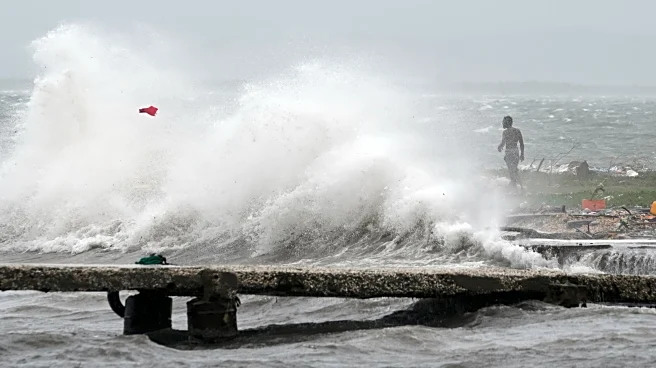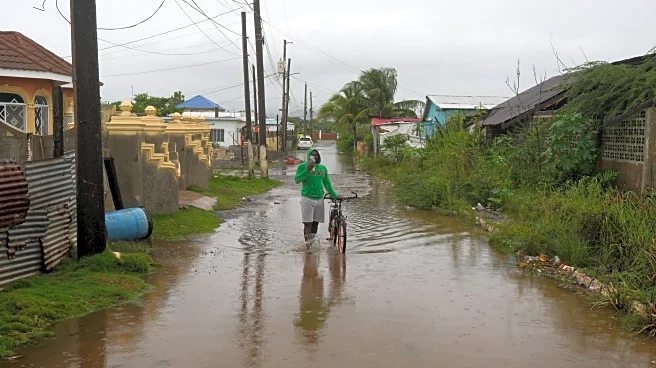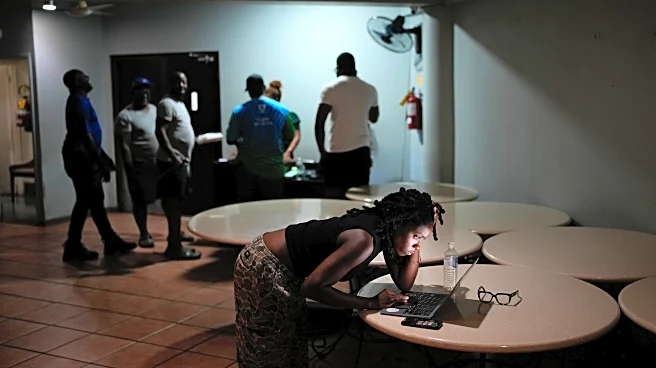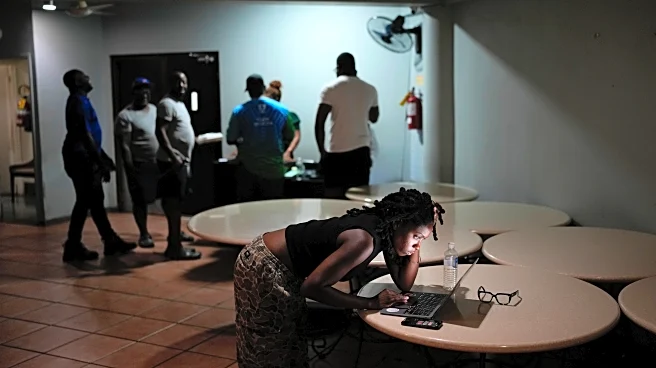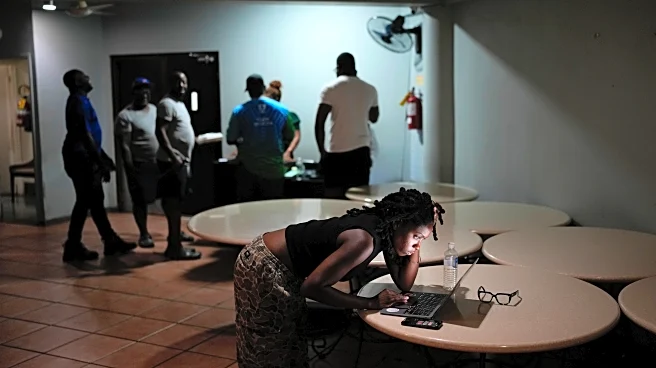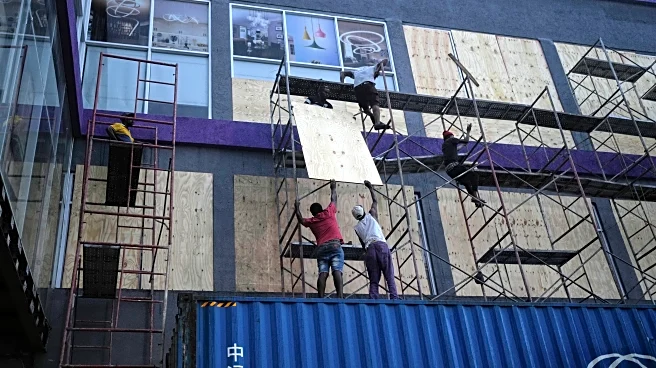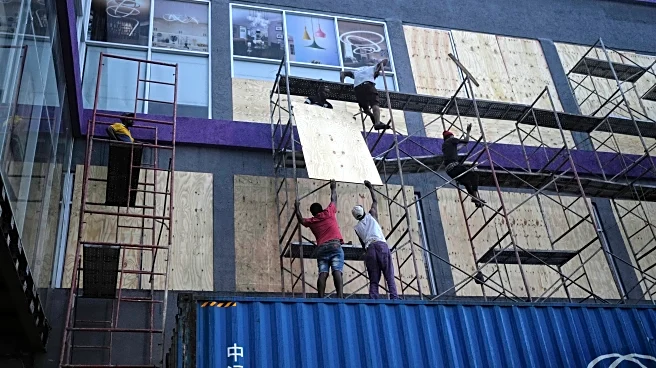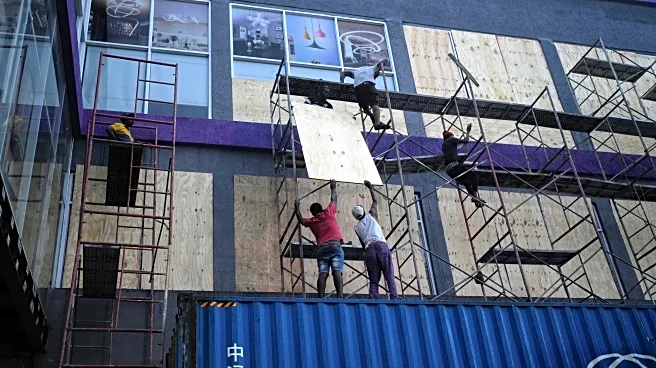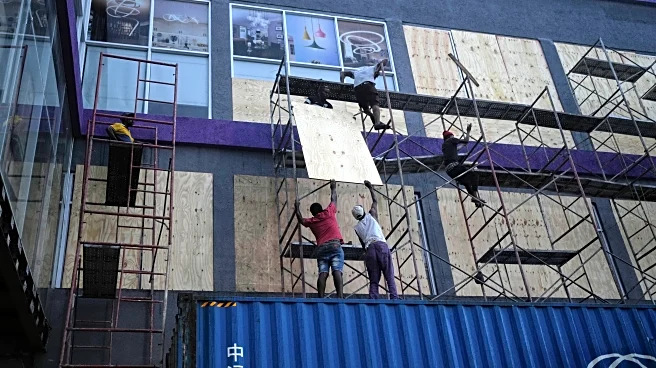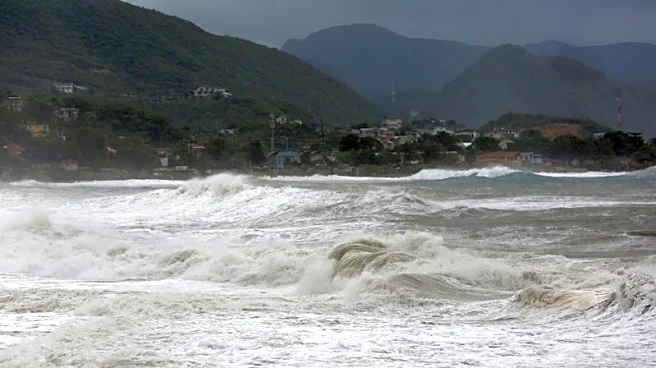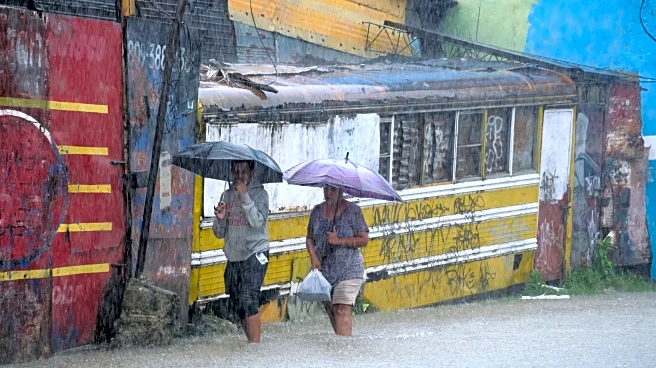KINGSTON, Jamaica (AP) — Hurricane Melissa has made landfall on Jamaica as by far the strongest storm to hit the island since records were first kept 174 years ago.
Melissa is a Category 5 storm with sustained
wind speeds of 185 mph (295 kph). It is expected to slice diagonally across the island, entering near St. Elizabeth parish in the south and exiting around St. Ann parish in the north, before heading for Cuba. A life-threatening storm surge of up to 13 feet (4 meters) is expected across southern Jamaica.
Officials said there was no more preparation they could do and cautioned that the cleanup and damage assessment will be slow. The storm has already been blamed for at least seven deaths in the Caribbean — three in Jamaica, three in Haiti and one in the Dominican Republic.
Here's the latest:
Hurricane Melissa has made landfall in Jamaica as a Category 5 storm, the strongest direct hit to the island in 174 years.
Melissa is the strongest hurricane to make landfall in Jamaica since record-keeping began in 1851. That’s according to Jamaica’s Meteorological Service and other experts.
Authorities in the eastern Cuban province of Holguín prepared to evacuate more than 200,000 people on Tuesday, in addition to a similar number moved to safety from the town of Banes.
Reports on social media and state television showed blue-and-white buses ferrying evacuees to shelter. Families clutched babies and belongings, and elderly people steadied themselves with canes as they disembarked.
“This phenomenon is very dangerous,” Deputy Prime Minister Eduardo Martínez said in a statement from Banes, where he was located in what appeared to be a shelter. “It is unprecedented,” he said of Hurricane Melissa.
“It’s going to be a very dangerous scenario,” said Michael Brennan, director of the U.S. National Hurricane Center in Miami, warning that there would be “total building failures.”
Brennan said Jamaica’s highest mountains could see wind gusts of up to 200 mph (321 kph).
“It’s just a catastrophic situation playing out here for Jamaica,” he said.
Brennan noted that Melissa would make landfall in eastern Cuba overnight Tuesday or early Wednesday.
As Jamaica shut down before landfall, one of the island’s main radio stations played uplifting songs, including a new reggae jam that referenced Melissa.
“Hold on, Jamaica!” the singer crooned as he gave a shout out to all those in the Caribbean affected by the storm, “our family in Cuba, our sisters in Haiti.”
In between songs, people called in and reported conditions in their neighborhoods, with one woman in western Jamaica saying it sounded like someone was knocking heavily on her door.
“Jamaica, this is not the time to be brave,” said Desmond McKenzie, deputy chairman of Jamaica’s Disaster Risk Management Council.
McKenzie said the government was prepared for potential rescues immediately after the storm.
“We have boats, helicopters, you name it,” he said.
The British government says it is ready to deliver humanitarian aid to Jamaica if requested, as the Caribbean nation braces for the impact of Hurricane Melissa.
Foreign Secretary Yvette Cooper said she spoke to her Jamaican counterpart Kamina Johnson Smith “to offer the U.K.’s full support and solidarity, and we are prepared to mobilize resources at their request.”
Cooper said the government is “positioning specialist rapid deployment teams to provide consular assistance to British nationals in the region.”
There are thought to be thousands of U.K. nationals in Jamaica, a combination of vacationers and people visiting relatives. The Foreign Office urged Britons to register their presence through an online portal to get updates from the British government.
The U.N.’s International Organization for Migration said Tuesday that it is dispatching solar lamps, blankets, indoor tents, generators and other items from its logistics hub in Barbados to Jamaica as soon as the storm crosses the island.
“Many people are likely to be displaced from their homes and in urgent need of shelter and relief,” said Natasha Greaves, interim head for IOM Jamaica.
Meanwhile, the nonprofit Direct Relief said it has two packages with enough medications to treat 3,000 people in one month staged in Panama and ready to deploy to Jamaica.
It also will send a shipment of 100 field medic packs from its warehouse in California to Jamaica as soon as the island’s main international airport reopens.
Officials in Jamaica say they are concerned that not enough people are seeking shelter as the catastrophic storm approaches.
More than 130 shelters were open across the island, but by late Monday, fewer than 1,000 people had heeded evacuation orders.
One exception was the small community of Old Harbor, just west of Kingston. Some 200 people crowded in its shelter by late Monday.
“It’s definitely more than last time,” said Jason Fuller, a firefighter and shelter volunteer, referring to the number of people that sought shelter from Hurricane Beryl last year.
He said the team of volunteers have ensured that there is adequate food, bedding and security with police and soldiers on location.
In the past, Jamaicans have complained about the safety in shelters and lack of basic goods.
“I am feeling safe and OK,” said a cheerful 13-year-old girl who only provided her first name, Natanya.
On Tuesday morning, Melissa was centered about 55 miles (90 kilometers) south-southeast of Negril, Jamaica, and about 265 miles (430 kilometers) southwest of Guantánamo, Cuba. The system had maximum sustained winds of 175 mph (280 kph) and was moving north-northeast at 7 mph (11 kph), according to the U.S. National Hurricane Center in Miami.
The NHC predicted landfall in Jamaica in the next few hours and said it would issue a special update at that time.
Colin Bogle, a Mercy Corps advisor based near Kingston, said most families are sheltering in place despite the government ordering evacuations in flood-prone communities.
Melissa also is expected to make landfall in eastern Cuba late Tuesday as a powerful hurricane. Cuban officials said Monday that they were evacuating more than 600,000 people from the region, including Santiago, the island’s second-largest city.
